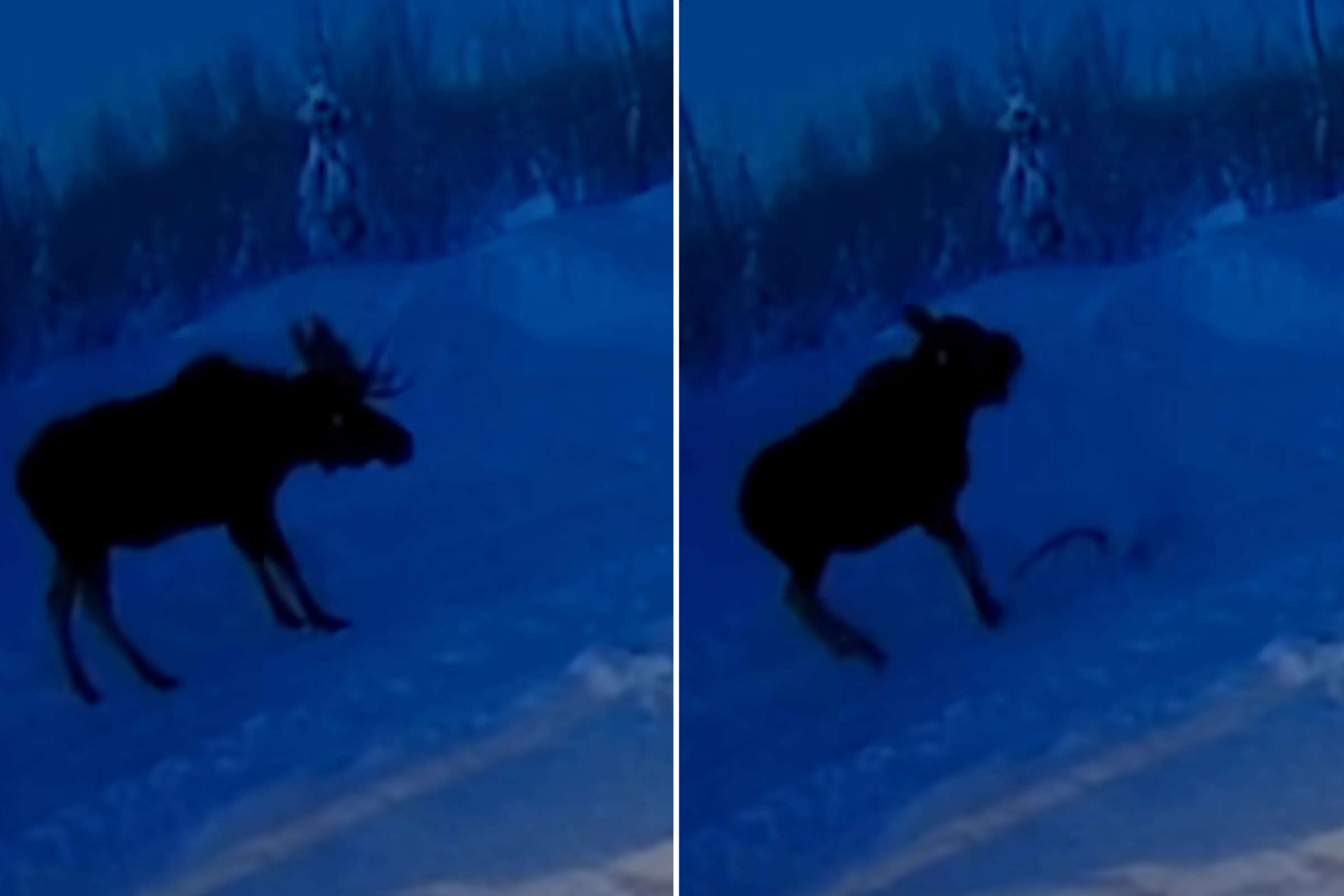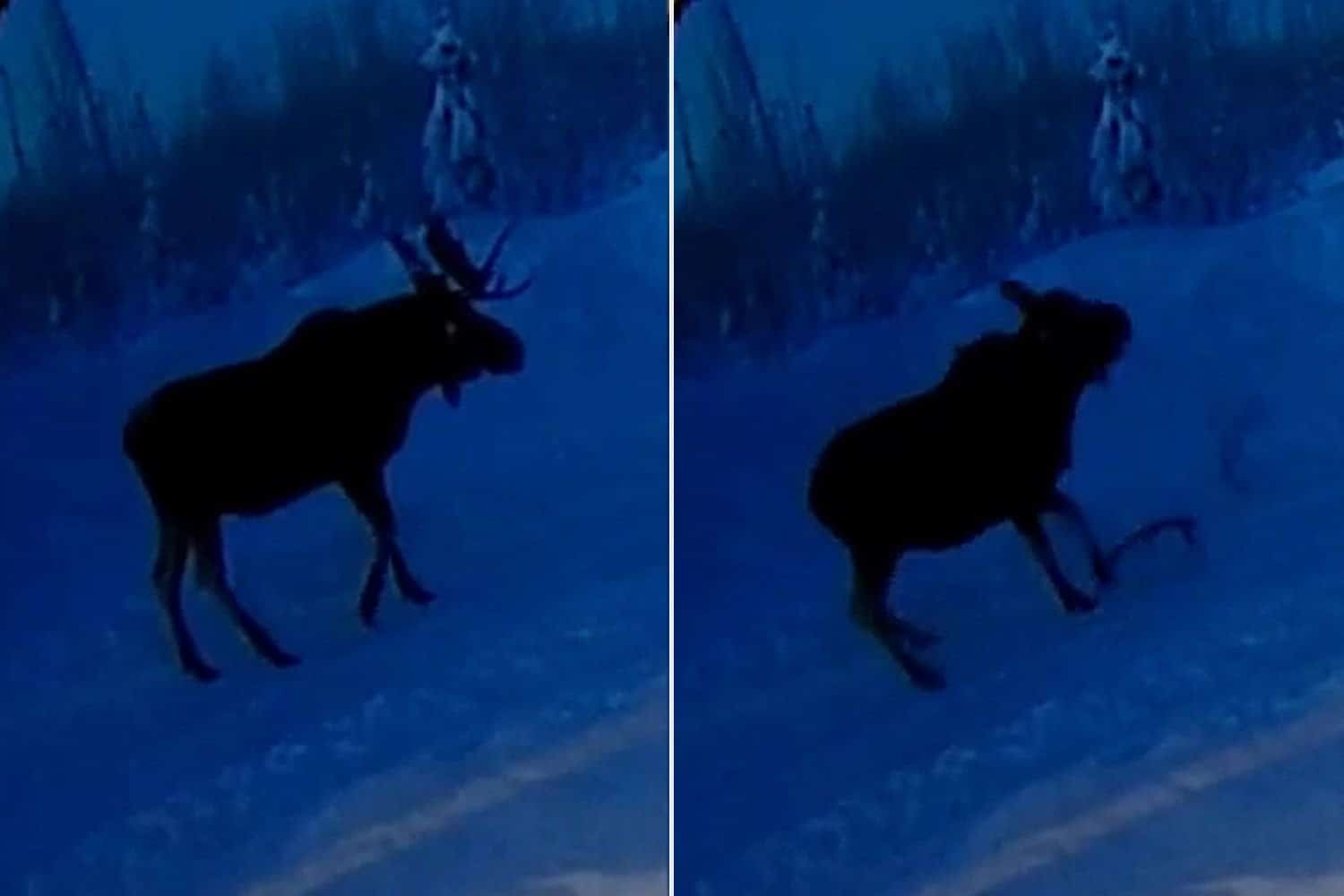Yes, moose antlers fall off annually, typically after the breeding season as they shed their antlers. Moose shed their antlers to conserve energy and grow new, larger ones the following year.
During this process, the antlers detach from the pedicles at the base, allowing new growth. It is natural for moose to shed their antlers annually, and the cycle repeats throughout their lives. Shed antlers are often sought after by collectors and used in various decorative and practical applications.
Understanding the shedding process can provide valuable insights into the life cycle and behavior of these iconic animals.

Credit: www.newsweek.com
The Life Cycle Of Moose Antlers
Learn about the intriguing Life Cycle of Moose Antlers and explore the stages they go through from growth to shedding.
Growth Stage
In the Growth Stage, moose antlers start as small bumps on the male moose’s forehead.
- Antlers are covered in a soft, fuzzy layer called velvet.
- During this stage, antlers grow rapidly, fuelled by the moose’s high testosterone levels.
- Antlers can grow up to an inch per day during this stage.
Maturation Stage
The Maturation Stage marks the peak of antler growth.
- Antlers become fully developed and reach their maximum size.
- The velvet dries up and moose start rubbing their antlers against trees to shed it.
- At this stage, antlers are used for displays and fights for mating rights.
Shedding Stage
During the Shedding Stage, moose antlers begin to loosen from the pedicle.
- The pedicle weakens, leading to the antlers eventually falling off.
- Moose shed their antlers annually, typically after the mating season.
- Once shed, the cycle begins anew with the growth of new antlers.
Factors Influencing Antler Shedding
Moose antlers shed annually due to hormonal changes triggered by changing daylight. Factors influencing this process include genetics, age, nutrition, and overall health. Shedding typically occurs after the rutting season, when the animal’s testosterone levels decrease, prompting antler casting.
Factors Influencing Antler Shedding Moose antlers are a fascinating aspect of these majestic creatures. Understanding the factors that influence antler shedding can provide insights into their natural lifecycle. Hormonal Changes, Nutrition and Health, and Environmental Factors all play a crucial role in the shedding of moose antlers.Hormonal Changes
Moose experience hormonal fluctuations that trigger the shedding of their antlers. Testosterone levels in male moose decrease after the rutting season, signaling the start of antler shedding.Nutrition And Health
Proper nutrition is essential for maintaining healthy antlers. High-quality diet, rich in minerals like calcium and phosphorus, supports antler growth and strength.Environmental Factors
Environmental factors such as temperature and daylight duration also influence antler shedding. Shorter days and decreasing temperatures signal to the moose that it’s time to shed their antlers. In summary, understanding the interplay of hormonal changes, nutrition, and environmental factors provides valuable insights into the natural process of moose antler shedding.The Mysterious Process Of Antler Shedding
The Mysterious Process of Antler Shedding is a fascinating natural phenomenon, especially when it comes to moose. These majestic creatures go through a fascinating series of physiological changes and behavioral signs leading to the shedding of their antlers. Understanding the shedding patterns provides insight into the intricate lives of moose and the impact it has on their ecosystem.
Physiological Changes
Moose antlers are made of bone and are the fastest-growing tissue known to humans. During the spring, moose experience a decrease in testosterone levels, triggering the layer of tissue, known as velvet, to dry up and peel away. This process reveals the hardened antlers underneath. Eventually, the moose shed their antlers, and this process is influenced by factors such as age, health, and even genetics.
Behavioral Signs
Before shedding, hormonal changes in moose lead to changes in behavior. They may become less aggressive and solitary as they prepare for the shedding process. Observing a moose rubbing its antlers against trees or brush is a clear sign of impending shedding. This behavior helps remove the remaining velvet and hastens the shedding process.
Shedding Patterns
Moose shedding patterns vary based on individual health, environmental factors, and genetics. While older bulls tend to shed earlier in the year, younger ones may take longer. Additionally, environmental factors such as nutrition and climate affect the shedding process. The antlers are eventually shed, and the cycle begins anew with the growth of new antlers and the cycle continues year after year.

Credit: www.newsweek.com
Importance Of Shed Moose Antlers
Shed moose antlers hold great value for various reasons, ranging from their ecological role to economic and conservation significance, as well as cultural and traditional uses. Understanding the importance of these antlers not only helps us appreciate their significance in the natural world but also sheds light on their value in human societies.
Ecological Role
Shed moose antlers play a crucial ecological role in several ways:
- They contribute to nutrient recycling in forest ecosystems, providing a source of calcium and other minerals for various organisms.
- As antlers are shed and fall to the forest floor, they become part of the decaying organic matter, enriching the soil and promoting the growth of plants.
- The presence of shed antlers also acts as a valuable food source for smaller animals and insects, ensuring a balanced ecosystem.
Economic And Conservation Significance
The economic and conservation significance of shed moose antlers cannot be overlooked:
- Collecting and selling shed antlers has become an important source of income for some communities, particularly in regions where moose populations are prominent.
- The demand for shed antlers is high in industries such as crafts, furniture, and jewelry, providing employment opportunities and contributing to the local economy.
- By focusing on shed antlers, it reduces the need for hunting moose solely for their antlers, thus supporting conservation efforts and maintaining healthier moose populations.
Cultural And Traditional Uses
Shed moose antlers also hold significant cultural and traditional importance:
- In many indigenous cultures, moose antlers are used for crafting tools, weapons, and ceremonial items, preserving ancient traditions and cultural heritage.
- Moose antlers are often incorporated into decorative pieces, such as ornaments, sculptures, and artwork, showcasing the beauty and elegance of these natural structures.
- These antlers have also found their place in folklore, symbolizing strength, power, and resilience.
Controversies And Conservation Efforts
When it comes to moose antlers, there are controversies surrounding their natural shedding and the human interference that threatens these magnificent creatures. Additionally, there are ongoing conservation efforts aimed at preserving their habitats and curbing illegal antler collection.
Human Interference
Human interference plays a significant role in the controversies surrounding moose antlers. Although the shedding of antlers is a natural process for moose, some individuals intentionally interfere by attempting to speed up the process or forcefully removing antlers. This disruptive behavior can cause unnecessary stress to the moose and potentially harm their overall health and well-being.
To ensure the conservation of moose populations, it is crucial to educate the public about the importance of allowing nature to take its course. Hunting regulations and guidelines should be strictly enforced to prevent illegal antler collection and protect the long-term survival of these animals.
Habitat Preservation
Preserving the natural habitats of moose is vital for their overall well-being and antler growth. These majestic creatures require suitable ecosystems that provide food, water, and shelter. Disruptions to their habitats, such as deforestation or urbanization, can have a negative impact on their population numbers and the quality of their antlers.
Efforts must be made to conserve and restore the habitats of moose to ensure their continued existence. This includes implementing sustainable land management practices, protecting forested areas, and reducing human encroachments in their territories.
Illegal Antler Collection
The illegal collection of moose antlers is an unfortunate reality that threatens populations and disrupts the natural shedding process. These antlers are highly sought after for their aesthetic appeal and as a material used in traditional medicine practices.
It is important to raise awareness about the consequences of illegal antler collection and the detrimental impact it has on moose populations. Strict enforcement of laws and penalties for those involved in illegal trade is crucial to combat this issue and preserve the integrity of moose habitats.

Credit: m.youtube.com
Frequently Asked Questions On Do Moose Antlers Fall Off
Do Moose Antlers Fall Off Naturally?
Yes, moose antlers fall off naturally. Antlers are made of bone and are shed and regrown each year. The shedding process usually occurs in late winter or early spring, and new antlers begin to grow shortly after. This cycle allows moose to have larger and more impressive antlers each year.
How Long Does It Take For A Moose To Shed Its Antlers?
It takes around two to three weeks for a moose to shed its antlers completely. Shedding typically occurs in late winter or early spring, as the blood flow to the antlers decreases and the bone weakens. Once the antlers are shed, a new set starts growing immediately.
Why Do Moose Shed Their Antlers?
Moose shed their antlers for several reasons. One of the main reasons is to conserve energy during the winter months when food is scarce. Shedding also allows moose to grow a new set of antlers that are larger and more powerful, which increases their chances of winning battles during the mating season.
Can Moose Antlers Be Used For Anything?
Yes, moose antlers have various uses. They are often collected as trophies or used for decorative purposes. The large size and unique shape of moose antlers make them popular for making furniture, chandeliers, and other decorative items. They are also used in traditional medicine in some cultures.
Conclusion
Understanding the shedding process of moose antlers is crucial for their conservation. Knowing when and why moose antlers fall off can help in wildlife management and provide valuable insights into the health and behavior of these magnificent animals. By delving into this natural phenomenon, we can appreciate the beauty and significance of moose antlers in the wild.



